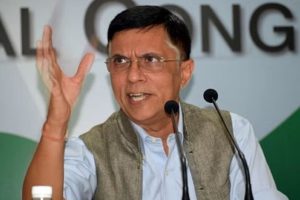Narendra Modi is poised to return as India’s Prime Minister for a historic third term with a much narrower than expected victory in the Lok Sabha elections 2024. Modi, arguably the most powerful leader in decades, failed to lead the BJP to a majority for the first time.
His return to power will now depend on smaller allies – particularly Chandrababu Naidu’s TDP and Nitish Kumar’s JD-U.
Advertisement
Both Mr Naidu and Kumar were once staunch critics of Mr Modi’s policies and style of politics. In fact, Mr Kumar was the man behind the INDIA bloc and brought the Opposition parties together before switching sides.
Similarly, Naidu too has been critical of Modi in the past but allied with the saffron party days before the general elections.
The fate of Modi’s new government will now rely on Naidu and Nitish – both are ambitious and unpredictable leaders.
Eknath Shinde’s Shiv Sena (S) with seven seats and Chirag Paswan’s LJP (RV) with five seats are the two other crucial allies Modi will need to hang on to for the next five years.
With a weaker mandate, the BJP will have to make sacrifices to accomodate allies Nitish Kumar and Naidu.
It is possible that several high profile ministers in the Modi government will have to make way for their junior allies.
Coming back to the results, the BJP came down to 240 seats – 32 short of the majority mark of 272 in a 543-member Lok Sabha – and 63 down from its 2019 tally of 303 seats.
The saffron party’s vote share also shrunk from 37.7 per cent in 2019 to 36.56 per cent in 2024.
On the other hand, the Congress won 99 seats – 47 up from its 2019 tally of 52 seats. Akhilesh Yadav’s Samajwadi Party won 37 seats – up from just five in the 2019.
The biggest surprise for the BJP came from Uttar Pradesh – a state it currently rules and gave the BJP most seats in 2019.
The SP-Congress alliance won 43 seats and the BJP came down to just 33. Notably, the saffron party also lost Faizabad (Ayodhya) seat.
In West Bengal, Mamata Banerjee’s TMC dashed the saffron party’s hopes and improved its tally from 22 seats to 29. The BJP was reduced to 12 from 18 last time.
In Maharashtra, the Congress won 13 seats and it’s MVA alliance partners Shiv Sena (UBT) and Sharad Pawar’s NCP (SCP) won nine and eight seats, respectively.
The BJP here was reduced to nine seats and its alliance partners Shiv Sena (Eknath Shinde) won seven seats. NCP – Ajit Pawar faction could win a single seat.
Similarly, the saffron party also suffered setbacks in Rajasthan and Haryana. In Rajasthan, where the BJP won 24 seats in 2019 and all 25 in 2014, could retain only 14 seats. The Opposition Congress and its allies won 11.
In Haryana, Congress made a strong comeback and bagged 5 of the 10 seats. The BJP could manage only 5 compared to all 10 in 2019. Bihar and Karnataka were the two other states where the BJP suffered losses this time.
The only positives for the BJP were Odisha and Kerala. In Odisha, BJP won 20 of the 21 seats and the Congress one. The party also wrested power from Naveen Patnaik’s BJD after 24 years by winning the assembly elections held simultaneously with the Lok Sabha polls.
The saffron party managed to open its account in Kerala for the first time and won the Thrissur seat. It failed to open account in Tamil Nadu.











